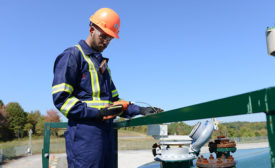Workplace Safety Culture
Assess & control fall risks
Eliminating hazards is the first line of defense
January 1, 2020
Making sense of NFPA 70E
A proactive approach to maintaining your electrical assets
January 1, 2020
Digital Edition Exclusive
For Your Health & Wellness: Coping with pain
11 alternatives to meds
January 1, 2020
Digital Edition Exclusive
Accelerate ergonomics: Systematically link to Lean and Six Sigma
December 4, 2019
Hazcom for multi-employer sites
All employees must be working from the same playbook
December 4, 2019
Become a Leader in Safety Culture
Build your knowledge with ISHN, covering key safety, health and industrial hygiene news, products, and trends.
JOIN TODAYCopyright ©2025. All Rights Reserved BNP Media.
Design, CMS, Hosting & Web Development :: ePublishing








